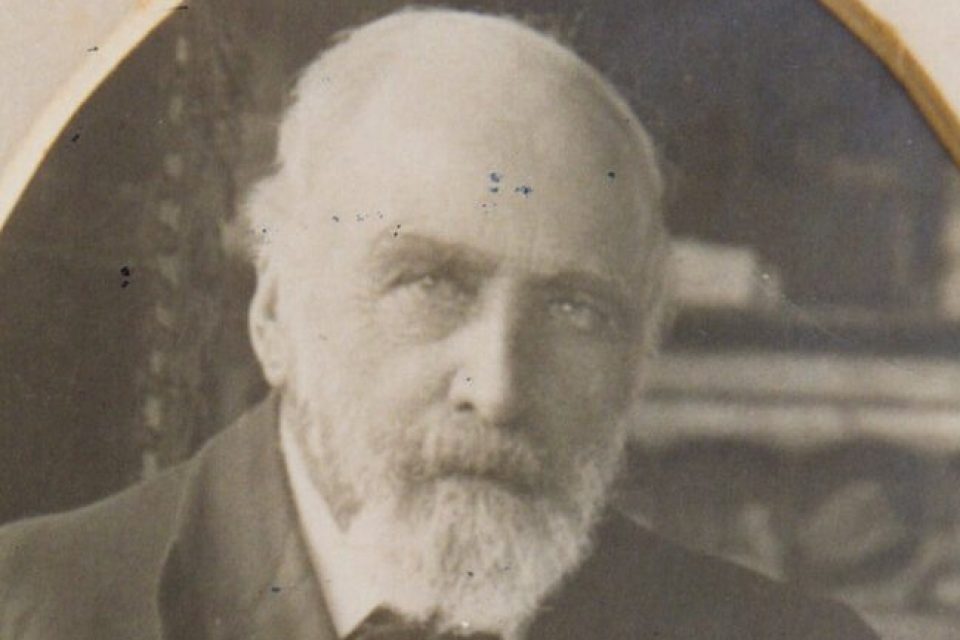
Dunmore House, home to the Fuller family, circa 1920. Photos: Discover Shellharbour.
The Fuller family was a driving force in the early development of Shellharbour, contributing to business, employment, politics and the armed forces.
The family patriarch, George Laurence Fuller, was seven when he arrived in Australia in 1839 from Ireland with his parents William and Ann and six brothers and sisters.
According to Discover Shellharbour, typhus fever broke out among the passengers during the voyage, and William died just 13 days before reaching Sydney.
Ann gave birth to a son who also died on the voyage, and a two-year-old girl died soon after the family arrived in Sydney.
Ann opened a store in Corrimal St, Wollongong, placing her young children in Liverpool and Parramatta orphanages until she could afford to bring them home.
When George left school, he helped his mother with her shop and in 1852, when he was just 23, he left for the goldfields, taking goods to sell and making a decent living.
In 1859, George married Sarah Miller of Renfrew Park, Gerringong, and purchased the Victoria Stores at Kiama.
George and Sarah had 14 children: George Warburton, Robert Miller, Frederick William, Ada Annie, Florence Elizabeth, Alfred Ernest, Sarah Emily, Edith Mary, Charles Laurence (died just under five months old), Minnie Cunningham, Colin Dunmore, Archie Douglas, Bryan Cecil, and an unnamed baby, who died in 1889.
In 1865, George purchased just over 1000 hectares of the Peterborough Estate on the Minnamurra River and named the estate and the family home Dunmore, after his old family home in Ireland. The remainder of the land was divided into small tenant farms.
Dunmore House was built of local blue metal, covered inside and out with lime mortar made from shells, and took five years to complete. Stone walls were built from the basalt rubble found on the estate, cedar used inside the home was cut from the estate, and the roof was made of slate tiles.
George was a generous man and contributed greatly to Shellharbour’s development.
He donated land in Swamp Rd, Dunmore, in 1883 for a new school named Minnamurra School, which became a private residence.
He expanded the blue-metal trade in 1885, providing cottages on Shellharbour Rd and work for the quarrymen. He donated land for a new Shellharbour General Cemetery to replace the sand cemetery that was washing away at the foreshore, and in 1896 gave land and a cash donation to build the Shellharbour School of Arts in Mary St, Shellharbour.
His last appearance in public was to open Kiama Hospital’s Sarah Fuller Memorial Ward in January 1917, a gift fully built and furnished by him.
George and Sarah celebrated their golden wedding anniversary at Dunmore House in 1909 with their family. Their tenants presented them with several gifts and in return, George gave each tenant a quarter’s rent.
Sarah died in 1913, and George died four years later. Both were buried in the Presbyterian section of Bombo Cemetery, Kiama. George’s funeral cortege was one of the largest in the district and extended for a mile and a half.







Their eldest son, George Warburton Fuller, studied law and entered politics at the age of 27 as the Member for Kiama in the NSW Parliament.
From 1901 to 1913, he represented Illawarra in the first Federal Parliament and in 1915 re-entered state politics and held the seat of Wollondilly until 1928.
George held the record for the shortest time serving as Premier – seven hours in 1921 – before he returned as Premier in the 1922 election. His government began the construction of the Sydney Harbour Bridge.
His obituary in the Kiama Reporter and Illawarra Journal in 1940 was glowing: “Many tributes have been paid by political leaders and friends to Sir George Fuller’s courtesy, charm of personality and a sense of fair play which earned him the personal respect of all his political opponents. He was a brilliant impromptu speaker, one who could always hold the interest of his audience, whatever the occasion. He remained intensely interested in the affairs of his native district and was a frequent visitor to Kiama, particularly at show times, until failing health in the past few years confined him to his Sydney home.”
George and Sarah’s 11th child, Colin Dunmore Fuller, served with distinction with the Light Horse in WWI.
Born at Dunmore House, he was regarded as a “dashing and accomplished horseman”.
Colin enlisted on 21 July, 1905, and at the outbreak of WWI was promoted to major. He was second in command of the 6th Light Horse 1st AIF going ashore at Gallipoli in 1915.
According to the Australian Dictionary of Biography, Colin became commanding officer in November and his unit remained at Anzac Cove until the evacuation in December, “with Fuller characteristically seeing off all his men before he left the beach”.
After the war, he received the Order of the Nile, conferred by the sultan of Egypt for “distinguished services rendered in the course of the (Egyptian] campaign”.
On returning to Dunmore House, he suggested a memorial arch be erected in Kiama, which was officially dedicated on 25 August, 1925, by his eldest brother, George, as Premier.
Colin became, as did his father before him, one of the leading figures in the community and known throughout the district in later years as the ”Old Colonel”.
After a long battle with lung cancer, he died on 19 September, 1953.

















